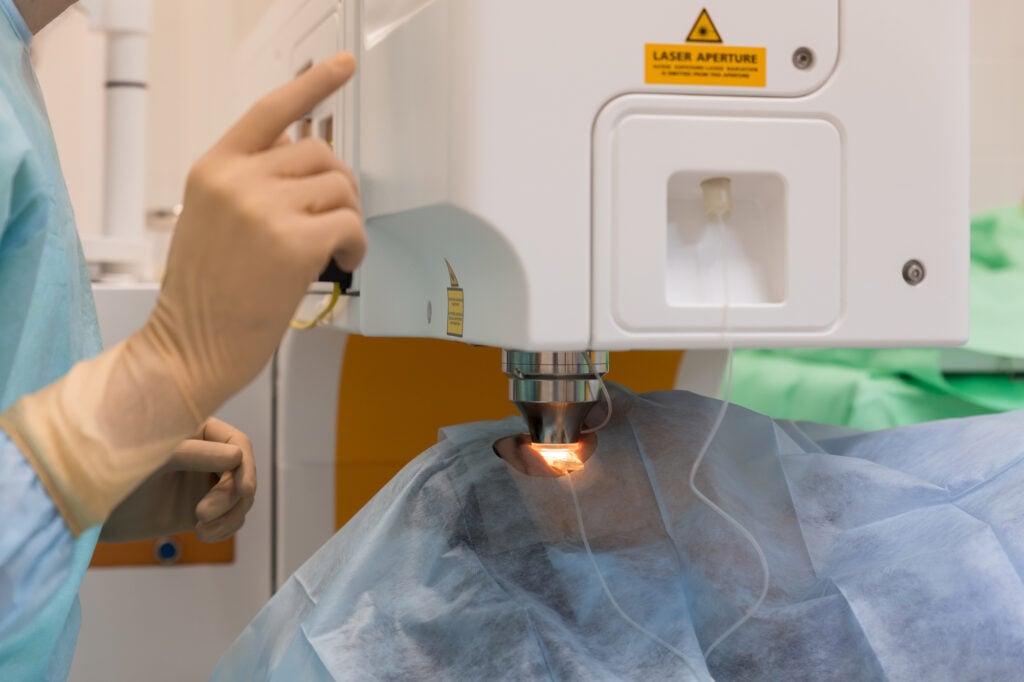LASIK surgery is one of the fastest-growing medical procedures in the U.S. It’s a virtually pain-free vision correction procedure that can be performed in around 15 minutes. Many people who get LASIK attain 20/20 vision without the need for glasses or contact lenses.2,5
If you’re considering LASIK eye surgery, you probably have questions. But with the myriad of LASIK resources available online, finding the answers you seek can be difficult.

To make this process easier, here’s a collection of the best LASIK resources to help determine if you’re a good candidate. Learn what to expect during the LASIK procedure and how to determine the best treatment plan for your vision needs.
Who is a Candidate for LASIK?

Most people qualify as potential candidates for LASIK surgery. However, certain conditions, such as good eye health and stable vision, must be met.
What makes someone a good candidate for LASIK surgery? Read our article, 7 Requirements for a Good LASIK Candidate, to find out.
Is LASIK Safe?
Yes, LASIK is a safe and effective laser eye surgery procedure. Millions of LASIK operations have been performed with minimal side effects. More than 95% of people who have gotten LASIK are satisfied with the results.5
Even though LASIK is considered safe, it can cause side effects. Dry eyes and vision disturbances, such as seeing halos around lights, are the most common.
Additionally, any type of refractive surgery involves some risk of complications. It’s important to discuss the potential risks and benefits of LASIK eye surgery with your eye doctor or surgeon.
Read our article, Is LASIK Safe?
What are the Potential Complications and Risks of LASIK?
Doctors perform more than 600,000 LASIK surgeries each year.5 Nearly all go as planned with little to no complications.
As with any surgery, there are potential risks involved. These include eye infections and corneal flap complications. It’s also possible for your vision to worsen after LASIK, even while wearing glasses or contact lenses.
Read about LASIK Complications and Risks.
What are the Benefits of LASIK?
LASIK is a highly successful procedure that provides clear vision to people who normally wear corrective lenses. It can treat the most common refractive errors, including nearsightedness (myopia), farsightedness (hyperopia), and astigmatism.
Most people who undergo LASIK achieve 20/20 vision, and nearly all attain at least 20/40. Some people will still need to wear glasses for reading or driving after the procedure.
Learn more about visual acuity in our article about 20/20 vision.
What Vision Problems Can LASIK Correct?
LASIK provides vision correction for most refractive errors, including nearsightedness, farsightedness, and astigmatism. Most people who get LASIK achieve clearer vision and no longer need to wear glasses or contacts.
Certain preexisting conditions or an unusual eye shape may increase complication risk. These include cataracts, glaucoma, and irregularly shaped corneas. In these cases, your eye doctor may advise against LASIK surgery.
Read our article, Should I get LASIK? Questions and Concerns.
What Happens During LASIK Eye Surgery?
Before surgery, your eye doctor will use a scanner to map your cornea. This map will guide the laser during the procedure.
You will remain awake during the entire LASIK procedure. However, your doctor will administer numbing eye drops to avoid discomfort.
During the LASIK procedure, your surgeon will cut a flap in the clear front covering of your eye (cornea). They’ll fold the flap back to expose the corneal tissue. Then, they’ll use a laser to reshape your cornea and replace the flap.
Learn more about the LASIK procedure.
How Long Does LASIK Last?
LASIK provides long-term vision correction, but changes are possible over time. How much depends on your age and how your eye conditions progress.
Most people who have had LASIK for 10 years remain happy with their vision. Some people need retreatment (LASIK enhancement).
Read about how long you can expect LASIK to last.
How Much Does LASIK Cost?
In the U.S., LASIK costs about $2,200 per eye or $4,400 for both eyes. The exact amount you can expect to pay will vary based on several factors. These include but are not limited to, the location of your surgeon’s office and the degree of vision correction required.
Read more about the factors that influence the cost of LASIK.
Does Insurance Cover LASIK?
LASIK is considered an elective procedure, which means most health insurance companies won’t normally cover it.
Some vision insurance plans offer coverage for refractive surgery. Others may deem LASIK medically necessary if it helps treat a condition. It’s always worth calling your insurance provider to ask.
Learn more about vision insurance and LASIK.
What are the Refractive Surgery Alternatives to LASIK?
If you and your eye doctor conclude that LASIK isn’t right for you, don’t worry. A few other refractive surgery options exist (that might be a good alternative to LASIK), like:
- LASEK. This procedure involves making a flap in the cornea’s outermost layer (epithelium) instead of a thick corneal flap, making it great for thin corneas.
- PRK. This is also good for people with thin corneas because it doesn’t require a corneal flap.
- SMILE. This procedure involves cutting a disc-shaped piece of corneal tissue.
- Phakic intraocular lens (IOL) implant. An IOL is an artificial lens commonly used in cataract surgery.
Read more about LASIK Alternatives.
Summary
Before getting LASIK, there are many things to consider, including candidacy, potential risks and benefits, and your expectations.
Discussing your questions and concerns about LASIK with a qualified eye surgeon is essential. If LASIK isn’t right for you, there are several other types of refractive surgery.
In this article




